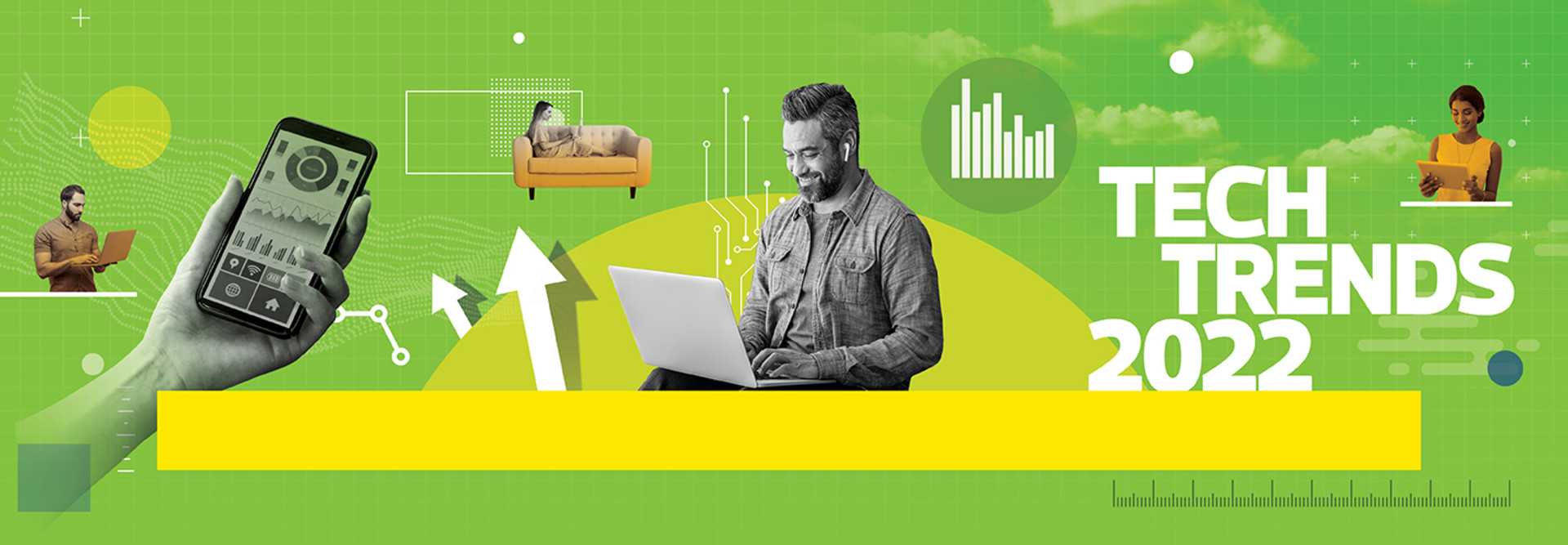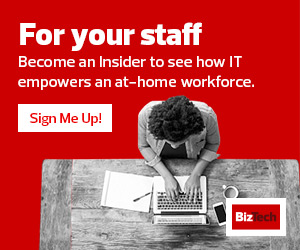Editor's note: BizTech is looking at the tech trends that will shape industries in 2022. You can also find our trends to watch in retail, energy and utilities, nonprofit and financial services.
It has been a tumultuous two years for the technology landscape. 2020 was the year of agility, with businesses across industries making big pivots to maintain productivity and operations amid unprecedented disruption. 2021 saw organizations develop plans to accommodate a new way of working, one with built-in flexibility and scalability to protect businesses against similar disruptions in the future.
That tees up 2022 as a year that will focus on execution. Developing a technology strategy that’s built for the future of work will require a vision that places the changing needs of employees at the forefront. BizTech spoke to CDW CTO Sanjay Sood about what it will take for technology to help organizations reach their full potential in 2022.
BIZTECH: How has the past year changed the landscape for technology leaders?
SOOD: Technology and business leaders have spent the past year preparing for what the long-term future of work holds. We're all struggling with how we come back. What are the implications of that for how we actually do our work, both now and moving forward?
The pandemic has changed employee expectations of corporate systems. As people were sent home and had to use more commercial digital platforms, they got used to how that worked and how it felt. Now, when they’re interacting with corporate systems, they're going to have those same expectations. They’re no longer going to accept systems that are slow, clunky or challenging to use.
BIZTECH: How has this change in expectations shifted how IT leaders need to approach their work, and approach innovation?
SOOD: It means that we need to be taking a user-centric approach to IT, and really start treating employees as if they are customers and consumers. Systems need to be easy to use. Employees are going to expect to be able to do it on their phone while they're on the go, whether they’re in a home office or a corporate one. They're going to expect performance no matter where they are in the country.
The user-centric design piece is going to be critical. IT is no longer building tools and capabilities, we’re building experiences. We have a lot to learn from those consumer businesses that obsess about their customers and users. They’re constantly asking how they can get customers engaged, and that needs to be a similar focus for the corporate world. Back-office IT professionals need to ask themselves how they can engage employees.
This includes working to prioritize the usability and the beauty of the interfaces that we create. There's a whole set of research about emotional design that indicates that building things that are visually appealing, with nice fonts and colors, puts people in a positive head space and creates user delight. Their mood becomes better, which makes them better able to learn and to adopt those systems. It all contributes to engaging the employee, influencing behaviors and enhancing their productivity.
BIZTECH: What are the key technologies that can help businesses meet these internal expectations from their staff?
SOOD: There's certainly tactical things, such as cloud migration, that businesses need to buy into. The cloud can ensure that employees can be mobile, delivering resilience at better cost. They need to have the right infrastructure to support this way of working, and they need to have the devices to give their employees the flexibility they’ve grown accustomed to.
There are also security measures that need to be taken to protect these environments. There are so many devices connecting to the network, such as Internet of Things tools and iPads, so what does that mean from a security perspective? Working around principles and frameworks such as zero trust will be critical to defending environments during this shift. Innovative collaboration tools are also key.
It’s all about how work follows very closely to those innovative paths that those consumer tech companies have forged for us. People care about the design and the usability, and they care about performance. The technology businesses use for internal work needs to be adaptable to the context of how people are living their lives. We can no longer see corporate systems and consumer systems as being completely different worlds.
BIZTECH: Should small businesses be using the same technology strategies as their larger counterparts?
SOOD: It’s important for small businesses to leverage those platforms out there that give them a leg up. These platforms have invested billions of dollars in their products, so it makes sense to take advantage of that investment and leverage those tools. Ultimately, how do you get those? How do you stand on the shoulders of those who can help you catch up to the market?
DISCOVER: Prepare for the future of work with expert guidance from CDW.
The first thing for small businesses was building a website. Then it was e-commerce. Now, they have the same worries as larger corporations, such as security and enabling a mobile workforce. Their customers are all over the place, and small businesses need to be able to serve them where they are. This is where managed service partners can provide a strong value for smaller organizations, helping them meet these needs and catch up to the market.
BIZTECH: How does agility factor into this user-centric approach?
SOOD: An agile framework is crucial to the new way of working. Businesses need to think about how they can better react to the market and plan more effectively, and — of course — how they can scale. Agility is innovation. Imagine businesses that were planning in December 2019: They had to go back to the drawing board by April 2020. If you must start from scratch, it can be very time-consuming. Agile frameworks have these planning increments, so businesses can shift when they need to.
It’s mostly about unlocking creativity while keeping project resources flexible, allowing for a quick change in direction if needed. These are the innovations being driven by consumer behavior, which has changed significantly in the COVID-19 era.












